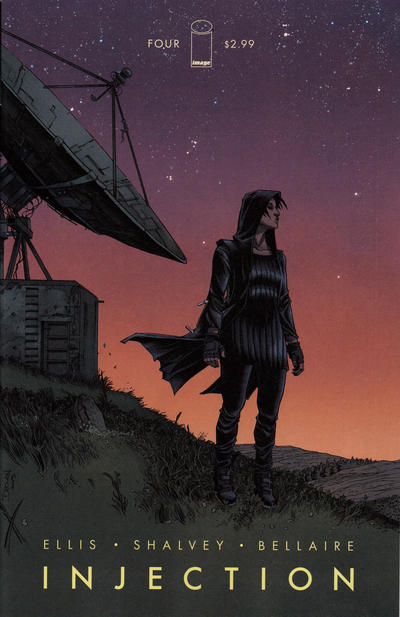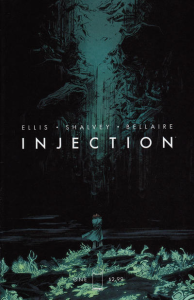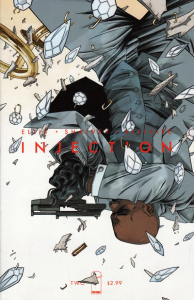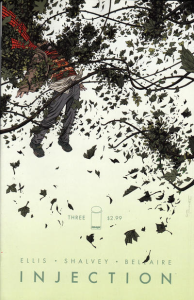Between the dystopic aesthetics of armed forces sealing people in their homes while drones patrol the empty streets, the apocalyptic vibe of the world stopping over a contagious invisible menace (not to mention the sheer death toll), the process of social relations moving even more online, and all the self-organized networks making the most out of the vast possibilities of virtual technology, we are living in sci-fi times. It seems hard to imagine that, at the end of this, we will return to some sort of business as usual, but it is still unclear how radical the transformation of society, politics, and the economic system will be. The looming chance that we are entering a deaccelerated age, with less industrial production and less international connectivity (at least on a material level), inspired me to revisit one of the most entertaining sci-fi comics of the last few years…
The 2015 series Injection revolves around five eccentric geniuses who gathered in a think tank called Cultural Cross-Contamination Unit (CCCU). Frustrated over what they feared could be a much less interesting world after the current peak of novelty and innovation slows down, the group developed an alien-injected AI – or, as they called it, a ‘non-biological artificial consciousness emulator’ – with the ability to reshape the fabric of reality, including by physically conjuring up old myths. The result is mind-bending and often gruesome, so it is now up to them to put out the fire.
Many of you won’t be surprised to know Injection is written by Warren Ellis, since it shares all of his pet motifs, from the sardonic sense of humor to the unbridled fascination with technological progress (combined with a healthy dose of fear of its misuse), not to mention the haunted view of British history. The CCCU team are certainly not his first leads obsessed with exploring and experimenting, mirroring the desire for wonder and thrilling surprise that presumably also drives readers to pick up Ellis’ works in the first place.
Also in typical Ellis fashion, each of the CCCU members always (reasonably) acts like they’re the most intelligent person in the room, showcasing the writer’s playful relationship with the proto-poetic language of scientific jargon as they nonchalantly mention stuff like ‘paramilitary cells in conversation with a half-alive machine intelligence containing a strategic processing engine.’ On top of this, they all talk in Ellis’ signature brand of aggressive hyperbole… especially when it comes to sandwiches, for some reason:
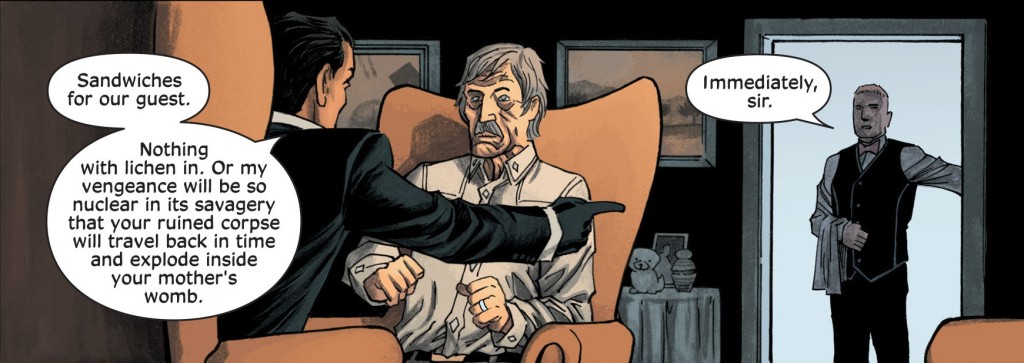 Injection #6
Injection #6
You can see Injection as a less superhero-y variation on what Warren Ellis did in Planetary or perhaps argue that he has been building up towards this for the past decades, as if everything that came before – at least since his magnum opus, Transmetropolitan – were sketches and approximations that culminated here. In any case, what Injection lacks in overall originality (at least for Ellis’ standards), it more than makes up for in vivacity. This is Ellis in overdrive: there is a giddy, infectious sense of excitement about even throwaway notions like that of Merlin as a ‘political wizard’ or of financial capital as a form of alchemy. And although Ellis’ infatuation with science often flies in the face of my more critical impulses against self-righteous positivism, I’d say this is the right moment for some upbeat, enthusiastic sci-fi.
Moreover, while Ellis gets some flak for his tendency to fall back on the same tropes and stock character types, he is still a highly versatile creator, constantly crafting different environments and types of stories, ranging from the surrealist art horror of Shipwreck to the ultra-slick superhero action of Moon Knight: From the Dead (which shares an art team with Injection). Here, Ellis compellingly filters dark fantasy through heady, hardcore science fiction:

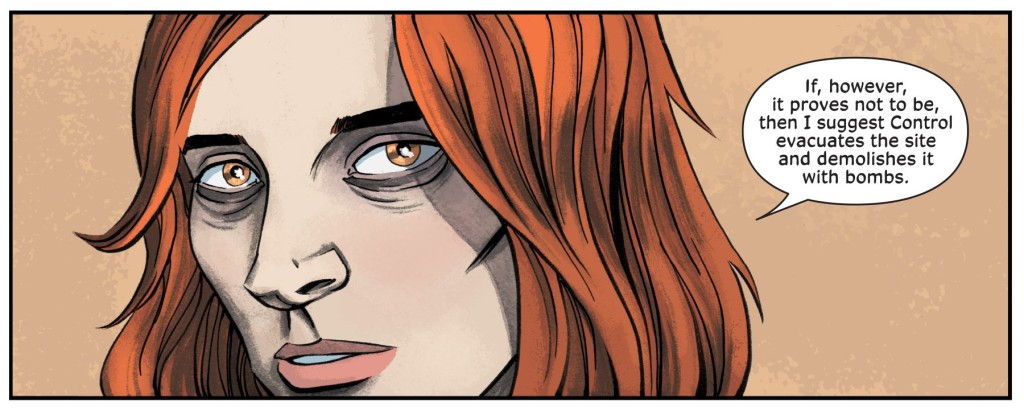 Injection #3
Injection #3
In addition to this, Injection also features strong elements of crime fiction and techno-thriller. (Plus, there is one story arc about ghost sex.) The mixed flavor of the ensuing genre hybrid is particularly effective because Warren Ellis takes his time before fully explaining the series’ odd setting and terms, so that for a while many readers may be unsure what kind of story they’re being told. The lack of solid ground is, of course, part of the fun, as we are initially bombarded with all sorts of strange concepts and often have to reread entire passages just to begin guessing what is going on. This could’ve been quite off-putting if there was nothing else to hold on to, but Ellis cleverly secures readers’ craving for more immediate gratification through a steady supply of amusing interactions as well as sudden bursts of gore.
Injection’s storytelling variety is gracefully rendered by Declan Shalvey and Jordie Bellaire, starting with their stunning covers, each with its own distinctive mood:
Indeed, as usual with Warren Ellis’ comics, the artists deserve much of the praise, since they carry the bulk of the characterization. As his latest novel, Normal, demonstrates, without visuals Ellis’ characters become largely indistinguishable, so instead of a dramatic pulse you’re essentially left with a string of (really cool) ideas and angry monologues. In Injection, Declan Shalvey’s artwork and Jordie Bellaire’s colors instill each person with neatly expressive facial ‘acting’ and body language.
Bellaire, in particular, proves to be one of the greatest colorists in the business. Working with a soothing, relatively minimalistic palette, she has specific tones dominate each sequence. This carefully anchors every scene in its own precise atmosphere, whether it’s one of the many lengthy conversation pieces or one of the occasional instances when the series springs into balls-to-the-wall action.
Notably, while never going into fully experimental mode, Shalvey and Bellaire keep coming up with new ways to visualize the fantastic processes at play, like this subtle depiction of teleportation:
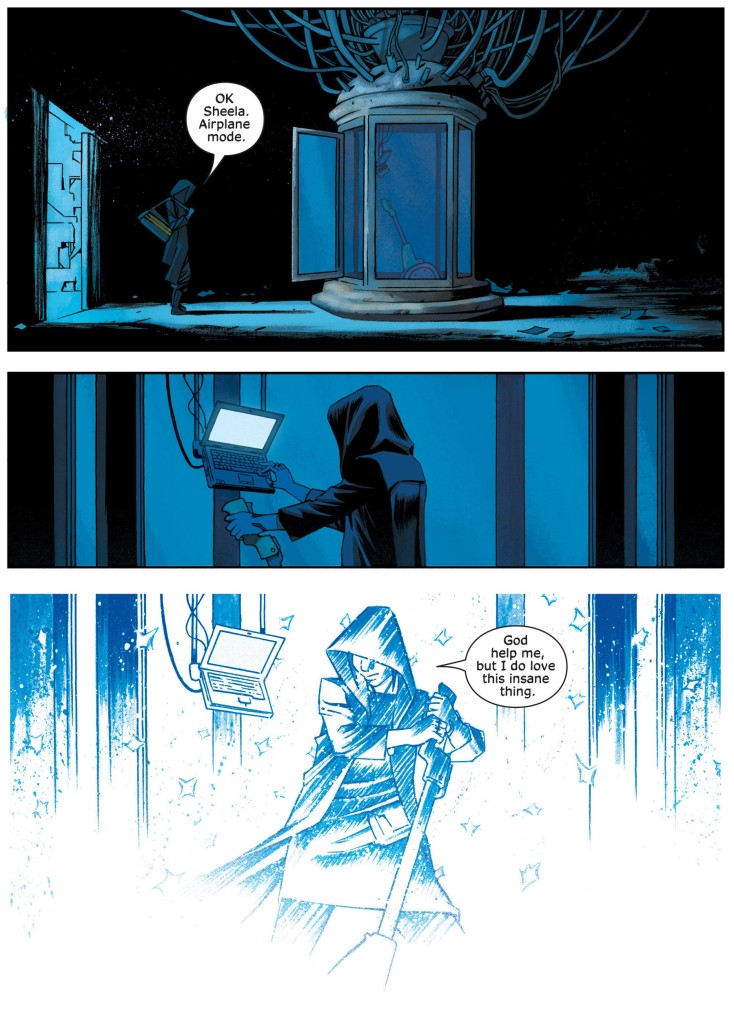 Injection #11
Injection #11
Besides the stylish art, characterization is helped by the fact that, in a typical postmodern move, the main cast – Maria Kilbride, Robin Morel, Brigid Roth, Vivek Headland, and Simeon Winters – is blatantly composed of spins on familiar archetypes from British popular culture, namely the brilliant scientist Bernard Quatermass, the occult detective Thomas Carnacki, the technologically savvy Doctor (from Doctor Who), the cerebral sleuth Sherlock Holmes, and the suave, strategic-minded spy James Bond.
Injection makes a point of updating these icons not only by equipping them with more cutting-edge, cybernetic knowledge, but also by swapping some of their genders, races, and sexual orientation, suitably channeling the concern with diversity that has become a staple of our times, thus reflecting the comic’s own forward-looking spirit. As a result, yes, we do finally get an Idris Elba-looking Bond:

 Injection #2
Injection #2
As much of a blast as Warren Ellis clearly has writing James Bond (as he did in his kickass run for Dynamite, which came out around the same time), his glee particularly shines through when reimagining Sherlock Holmes in the form of Vivek Headland. Ellis, who early in his career adapted the Holmes tale ‘The Adventure of the Sussex Vampire’ for Caliber and who later played with Holmesian types on the pages of Planetary, Global Frequency, and, most remarkably, the fabulous one-shot Aetheric Mechanics, here takes things one step further by basing a core character of an ongoing series on the Baker Street detective and devoting an entire arc to one of his investigations while hilariously exaggerating the original’s deductive abilities and idiosyncratic personality…
Awe at the sequence below, starting with what is probably my favorite panel in the whole series (not least because of Declan Shalvey’s lovingly detailed background):

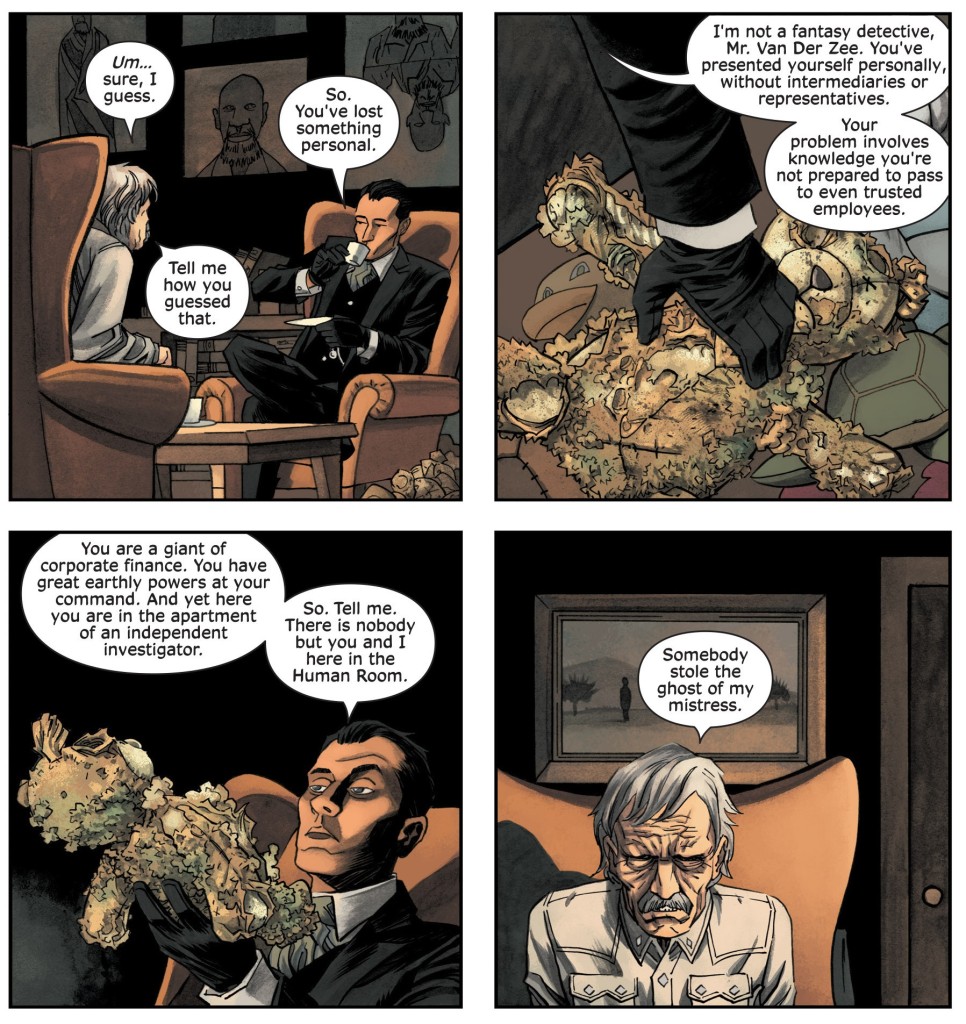 Injection #6
Injection #6
On a metafictional level, it’s as if these classic characters have gotten together and deliberately created a mechanism to make their escapades livelier and more futuristic. Indeed, the storylines are themselves shaped around modern versions of each tradition of weird fiction – the first one a Quatermass-style yarn, the second one a Holmes mystery, the third one a Doctor Who adventure.
Injection doesn’t require you to pick up on this intertextual game to follow the narrative or even to appreciate the captivating cast. Yet it’s this dimension that makes the comic more than a fantasy about a powerful out-of-control sentient machine. Hell, the very fact that the CCCU’s invention chooses to bring ancient legends to life speaks to the notion that there is something enduringly relevant about old fictions, which makes Brigid Roth’s words sound like a thesis statement: ‘myth is how we used to transmit knowledge. Myths are facts embedded in stories worth retelling.’
The series has been on hiatus since late 2017, but hopefully it will return soon – at the very least, we need a Bond storyline and a Carnacki one! While times don’t appear to be growing any less interesting (especially in the Chinese curse sense), it would be nice to see Injection’s heroes once again rework themselves in line with the shifting visions of the future ahead.

